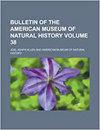亚洲残蝎科的系统学——拟蝎科Gromov,1998年,附洞穴蝎、巨球蝎和巨球蝎的综述
IF 3.4
2区 环境科学与生态学
Q1 BIODIVERSITY CONSERVATION
Bulletin of the American Museum of Natural History
Pub Date : 2021-09-30
DOI:10.1206/0003-0090.453.1.1
引用次数: 7
摘要
摘要1998年,首次对现存的亚洲蝎科伪蝎科Gromov进行了综合系统的修订,利用了在几次对大多数类型地区的探险中收集到的前所未有的材料。通过对两个细胞核和三个线粒体基因座的140个形态特征和8608个核苷酸碱基对的串联DNA序列的系统发育分析,以及对60个标本的22个比率和8个计数的多元统计分析,对拟蟾科的亚科、属和种进行了修订。该科有三个亚科、四个属和六个物种。Troglokhamouaninae,亚科。nov.,是为了恢复命名不典型亚科Pseudochactinae Gromov的单系而创建的,1998年。Aemngvantom,gen.nov.,是为了适应Aemngvan tom lao(Lourenço,2012),comb而创建的。nov.和Aemngvantom thamnongpaseuam gen.et sp.nov.提出了四个新的同义词:Troglokhamouanus louisaneorum Lourenço,2017=Troglokhomouanus steineri Lourenç。十一月Vietbocap thiendoungensis Lourenço和Pham,2012=Vietbo卡普canhi Lourenço and Pham,2010,syn。十一月Vietbocap aurantiacus Lourenço等人,2018=V.canhi,syn。十一月五年一度的Vietbocap Lourenço等人,2018=V.canhi,syn。nov.提供了亚科、属和物种的修订诊断、对比图像、关键地图和分布图,以及可用的生态学和保护状况数据摘要(如适用)。在东南亚的伪足纲动物中,所有这些似乎都是专性的穴居动物,Vietbocapinae Lourenço的三个物种,2012年,具有高度的穴居形态,而Troglokhamouaninae的唯一一个物种则几乎没有。应用最近修订的Schiner Racovitza系统定义对地下生物进行分类,只有维也纳可以被认为是三球蛋白。类似地,我们重新审视了穴居、穴居和球蝎的全球多样性,并提出了穴居和穴居生态分类的关键。目前,世界上三球蝎和三球蝎的总数分别为58种和28种,分属29属和17属,15科和13科。本文章由计算机程序翻译,如有差异,请以英文原文为准。
Systematics of the Relictual Asian Scorpion Family Pseudochactidae Gromov, 1998, with a Review of Cavernicolous, Troglobitic, and Troglomorphic Scorpions
ABSTRACT The first integrative systematic revision of the relictual Asian scorpion family Pseudochactidae Gromov, 1998, making use of an unprecedented collection of material acquired during several expeditions to most of the type localities, is presented. The subfamilies, genera and species of Pseudochactidae are revised based on a phylogenetic analysis of 140 morphological characters and 8608 nucleotide base pairs of concatenated DNA sequence from two nuclear and three mitochondrial gene loci, and a multivariate statistical analysis of 22 ratios and 8 counts for 60 specimens. Three subfamilies, four genera and six species are recognized in the family. Troglokhammouaninae, subfam. nov., is created to restore the monophyly of the nominotypical subfamily Pseudochactinae Gromov, 1998. Aemngvantom, gen. nov., is created to accommodate Aemngvantom lao (Lourenço, 2012), comb. nov., and Aemngvantom thamnongpaseuam gen. et sp. nov. Four new synonyms are presented: Troglokhammouanus louisanneorum Lourenço, 2017 = Troglokhammouanus steineri Lourenço, 2007, syn. nov.; Vietbocap thienduongensis Lourenço and Pham, 2012 = Vietbocap canhi Lourenço and Pham, 2010, syn. nov.; Vietbocap aurantiacus Lourenço et al., 2018 = V. canhi, syn. nov.; Vietbocap quinquemilia Lourenço et al., 2018 = V. canhi, syn. nov. Revised diagnoses of the subfamilies, genera and species, with comparative images, a key and distribution maps are provided, along with a summary of available data on ecology and conservation status, where applicable. Among the Southeast Asian pseudochactids, all of which appear to be obligately cavernicolous, the three species of Vietbocapinae Lourenço, 2012, are highly troglomorphic whereas the sole species of Troglokhammouaninae is barely so. Applying recently revised definitions of the Schiner-Racovitza system for the classification of subterranean organisms, only Vietbocapinae can be considered troglobitic. The global diversity of cavernicolous, troglomorphic and troglobitic scorpions is similarly revisited and a key to ecological classification of cavernicolous and troglomorphic scorpions presented. The world totals of troglomorphic vs. troglobitic scorpions are currently 58 vs. 28 species, in 29 vs. 17 genera and 15 vs. 13 families, respectively.
求助全文
通过发布文献求助,成功后即可免费获取论文全文。
去求助
来源期刊
CiteScore
7.90
自引率
2.90%
发文量
4
审稿时长
>18 weeks
期刊介绍:
The Bulletin, published continuously since 1881, consists of longer monographic volumes in the field of natural sciences relating to zoology, paleontology, and geology. Current numbers are published at irregular intervals. The Bulletin was originally a place to publish short papers, while longer works appeared in the Memoirs. However, in the 1920s, the Memoirs ceased and the Bulletin series began publishing longer papers. A new series, the Novitates, published short papers describing new forms.

 求助内容:
求助内容: 应助结果提醒方式:
应助结果提醒方式:


